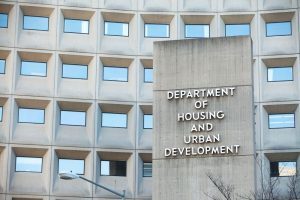 Come January 1, 2019, the Federal Housing Administration's (FHA's) loan limits are set to increase across most areas in the country. The U.S. Department of Housing and Urban Development (HUD) announced that FHA loan limits would be increasing in more than 3,000 counties, with the loan limit ceiling increasing to $726,525 from $679,650 in high-cost areas of the country.
Come January 1, 2019, the Federal Housing Administration's (FHA's) loan limits are set to increase across most areas in the country. The U.S. Department of Housing and Urban Development (HUD) announced that FHA loan limits would be increasing in more than 3,000 counties, with the loan limit ceiling increasing to $726,525 from $679,650 in high-cost areas of the country.
HUD announced the FHA would also increase its floor to $314,827 from $294,515 in 2019. The limit would also increase for FHA-insured Home Equity Conversion Mortgages (HECMs) to $726,525 from $679,650. Clarifying this increase, HUD said, "FHA’s current regulations implementing the National Housing Act’s HECM limits do not allow loan limits for reverse mortgages to vary by MSA or county; instead, the single limit applies to all mortgages regardless of where the property is located."
These changes in FHA's floor and ceiling caps mean that the maximum loan limits for FHA forward mortgages would rise in 3,053 counties and remain unchanged in 181 counties. The rise in forward mortgages in the over 3,000 counties would also be due to the robust increases in median housing prices and the required changes to FHA's floor and ceiling limits that are tied to the Federal Housing Finance Agency's (FHFA's) increase in the conventional mortgage loan limit for 2019.
Giving the definition of what is considered a high-cost area, HUD said that the National Housing Act required FHA to establish its floor and ceiling loan limits based on the loan limit set by the FHFA for conventional mortgages owned or guaranteed by Fannie Mae and Freddie Mac. Giving a breakdown, FHA’s 2019 minimum national loan limit, or floor, of $314,827 is set at 65 percent of the national conforming loan limit of $484,350. This floor applies to those areas where 115 percent of the median home price is less than the floor limit.
As a result of this calculation, "Any areas where the loan limit exceeds this ‘floor’ is considered a high-cost area, and HERA requires FHA to set its maximum loan limit ‘ceiling’ for high-cost areas at 150 percent ($726,525) of the national conforming limit," HUD said.

 theMReport.com Your trusted source for mortgage banking news
theMReport.com Your trusted source for mortgage banking news








